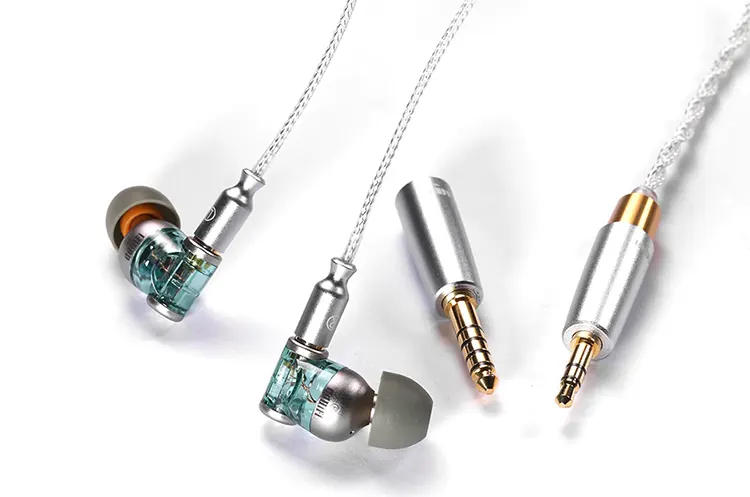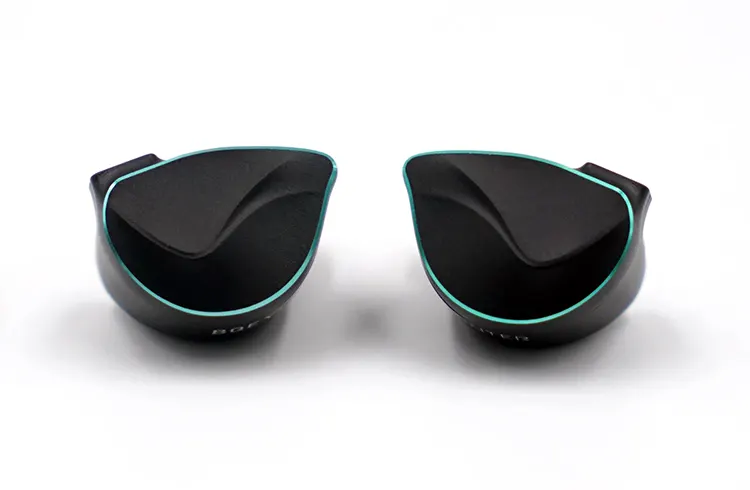Synergy
The Aviation works well with smoother-sounding sources such as the Shanling M6 Pro (using the 4.4mm balanced output).
A brighter DAP, such as the Cayin N6ii (E01 motherboard), added a bit of detail, but running the 3.5mm single-ended jack, the volume had to be markedly raised to get the same perceived hearing level.
Efficiency
With an impedance of 39Ω and a sensitivity of 118 dB, the Aviation is a bit harder to drive, but the high sensitivity makes for an easy listen.
Due to that high sensitivity, the background is not as black as some, but this aids in retrieving detail, countering the darker tonality.
Pairings
The dichotomy of pairings is quite evident in the Aviation. It plays nicely with some and less so with others.
The Shanling M6 Pro plays nicely, with the richness of the warm character adding to the mellow listening ability of the Aviation.
Using the 4.4mm balanced jack, the added nuances of the vibrant mid-section add to the quality signature. This was a good pairing for smoother signature genres such as jazz or Indy-type music.
The synergy was less evident using the Cayin N6ii (E01 motherboard) and the 3.5mm single-ended jack.
There is only so much a vibrant DAP such as the N6ii can do to an IEM, which does not come across with too much detail. The vibrant parts in pop genres didn’t combine as well as a result, due to the thicker overall signature of the Aviation.
Select Comparisons
ddHiFi Janus 3
Technical
The Janus 3 is the third iteration in the Janus series and the most affordable. Priced at $129, the single 10mm dynamic driver has lost the dual connection of 0.78mm 2-pin and MMCX, going to singular MMCX connectivity.
Design
The Janus 3 is a single-driver IEM, with a bullet shape like its predecessors. But, with a nozzle canted slightly forward, it departs from the straight nozzle of previous iterations. Still made to be worn up or down, the Janus 3 cable does not have ear hooks, and I had a hard time keeping the thin cable in place behind my ears.
You can still see the insides of the Janus, which has become a trademark of the build. With a build color of transparent bluish-green (think old Coke bottles) and a front half-dome of dull silver, the Janus 3 is still markedly different than most other IEMs on the market.
The cable is tightly wound with a braided 2-wire OCC Litz terminating in a changeable 3.5mm single-end or 4.4mm balanced jack. Many manufacturers are going this route, and ddHiFi includes their own small DAC in the termination plug.
Performance
The 10mm dynamic driver in the Janus 3 hits with more authority than the Aviation and faster decay. Attack is still on the slower side, but the expediency of decay lends itself towards tighter control down low. Vocals come across as less natural than the Aviation but with a good presence. They are a bit more forward as well.
Treble reach is peakier, with a bit too much bite for my tastes, but the extension helps spread the notes out with good authority if lacking a bit of weight. The more organic nature of the Aviation wins out as a result but with less authority than the Janus 3 presents.
For those who prefer a more vibrant signature, the Janus 3 would be the better choice. For those who prefer warmth to the character, with a more natural feel, the Aviation would be a better choice.
SIVGA Nightingale
The Nightingale is SIVGA’s new planar magnetic driver IEM, with the stellar looks that SIVGA headphones are known for.
Coming in at $229. The Nightingale could be considered SIVGA’s first “real” attempt at building an IEM, following the popularity of their stunningly good-looking headphones (with performance to mostly match).
Technical
A 14.5mm planar magnetic driver utilizing dual magnets results in higher transmission sensitivity. The magnets are made of rare-earth iron boron, which is meant to improve efficiency compared to standard single magnets (magnets on both sides).
The diaphragm is made of an extremely thin material combined with an aluminum coil, purportedly resulting in better transparency and soundstage performance.
Design
The faceplate is a typical hand-polished wood surrounded by a silver-accented plastic ring. The 3D-printed shell fits nicely together, with a vent hole on the inside. The silver nozzle is push-mounted into the shell and has a rather large diameter and flange, making tip mounting extremely difficult.
The nozzle opening is a “filter” laden in gold, with an ornate spiral pattern serving the dual purpose of looks and functionality.
Performance
Planar magnetic drivers in IEMs are a newer direction many manufacturers are taking with mixed results. The nightingale works well in some genres, and not as well in others.
Where the Aviation shines in jazz-oriented music, the Nightingale works effortlessly with classical. The ability to differentiate parts of a classical orchestral movement lies in allowing the parts enough space to work in harmony together. The Sivga succeeds, making it ideal at this price for those whose flavor is classical.
Pop works, but not as well. More differentiation within the signature is needed, as all tend to flow together.
There is the traditional “flat” planar response to some instrumentation, and cymbal hits as well as the percussion sound less than realistic, and in some cases, there is a fizz to cymbal notes and clashes.
BQEYZ Winter
The Winter closes the curtain on BQEYZ’s venerable season-orientated IEM rotation. Priced at $230, the Winter provides a signature markedly different than the other seasons.
Technical
A 12mm dual-cavity dynamic driver and 11.6mm bone conduction unit drive the Winter. The bone conduction unit also houses an oscillating plate along with a treble frequency refinement driver (more or less a filter) for a full-range effect.
Between the dynamic driver and bone conduction unit is a filter, which helps to minimize resonance between the units. An impedance of 38Ω and sensitivity of 113dB make for a good comparison to the Aviation.
Design
Graceful curves on the faceplate are said to mimic ice skating movements, which fit perfectly into the winter scene. BQEYZ IEMs have always had top-class build quality and fit, pairing well with good looks. The Winter is no exception.
The 49-core single-crystal copper-plated silver cable is thicker than the other seasonal IEMs and a bit stiffer as well. The looseness in the weave below the Y-splitter helps with tactility.
Performance
Bass is presented tighter than the Aviation, with faster attack and decay, reaching lower as well. There is a small bleed into the mids giving warmth and richness to the sound. That tying together helps the mids become the star, which comes across with verve and good detail.
Technically speaking, the Winter does not shine but combines all in a better manner than the Aviation. Where the Aviation fights to keep the signature coherent, the Winter allows the flow to dictate what we hear.
Neither is especially good in technicality, but the Winter ties the whole together with more cohesiveness.
There is a bite to the upper end in the Winter, which the Aviation curtails in a better manner to me. Combined, the soundstage is remarkably similar in cubic dimensions, but the Winter provides better imaging and placement of instruments within that realm.
The musicality of the Winter provides a better cross-genre listening aspect than the Aviation, but not without the caveats mentioned.
Our Verdict
The QoA Aviation is a solidly built hybrid IEM with good looks to back up a pleasant sound.
The added benefit of genre-specific listening makes for an interesting listen and a good choice. Good to very good for jazz and indie music, but not quite so good for pop and EDM, making the Aviation almost too specific.
The smooth character of the signature overcomes the parts’ seeming ability to work separately. Taken as individual aspects, the Aviation falls a bit.
Taken as a whole unit, the combination makes for a somewhat energetic, smooth character in the sound signature. The energy provided in the mids provides for an engaging sound while also adding to the smooth character. This is the summative effect involved with the Aviation at its best.
The pleasant tonality and weight of notes make for a thoroughly engaging listen and a tuning that should be considered when looking for an IEM at this price. And one for when you prefer a smooth, relaxing listening session.
QoA Aviation Technical Specifications
- 3 Knowles Balanced armature drivers
- 8mm Custom-Developed Dynamic Driver Unit
- Three Acoustic Tube Structure Design
- 3+1 Crossover Tuning
- Impedance: 39Ω
- Sensitivity: 118dB
- 3D-Printed Ear Shells
- Hand-painted faceplates
- High-Purity 5N OCC Copper Cable
- 78mm 2-Pin Connectors
- Swappable 3.5mm and 4.4mm Termination Plugs






